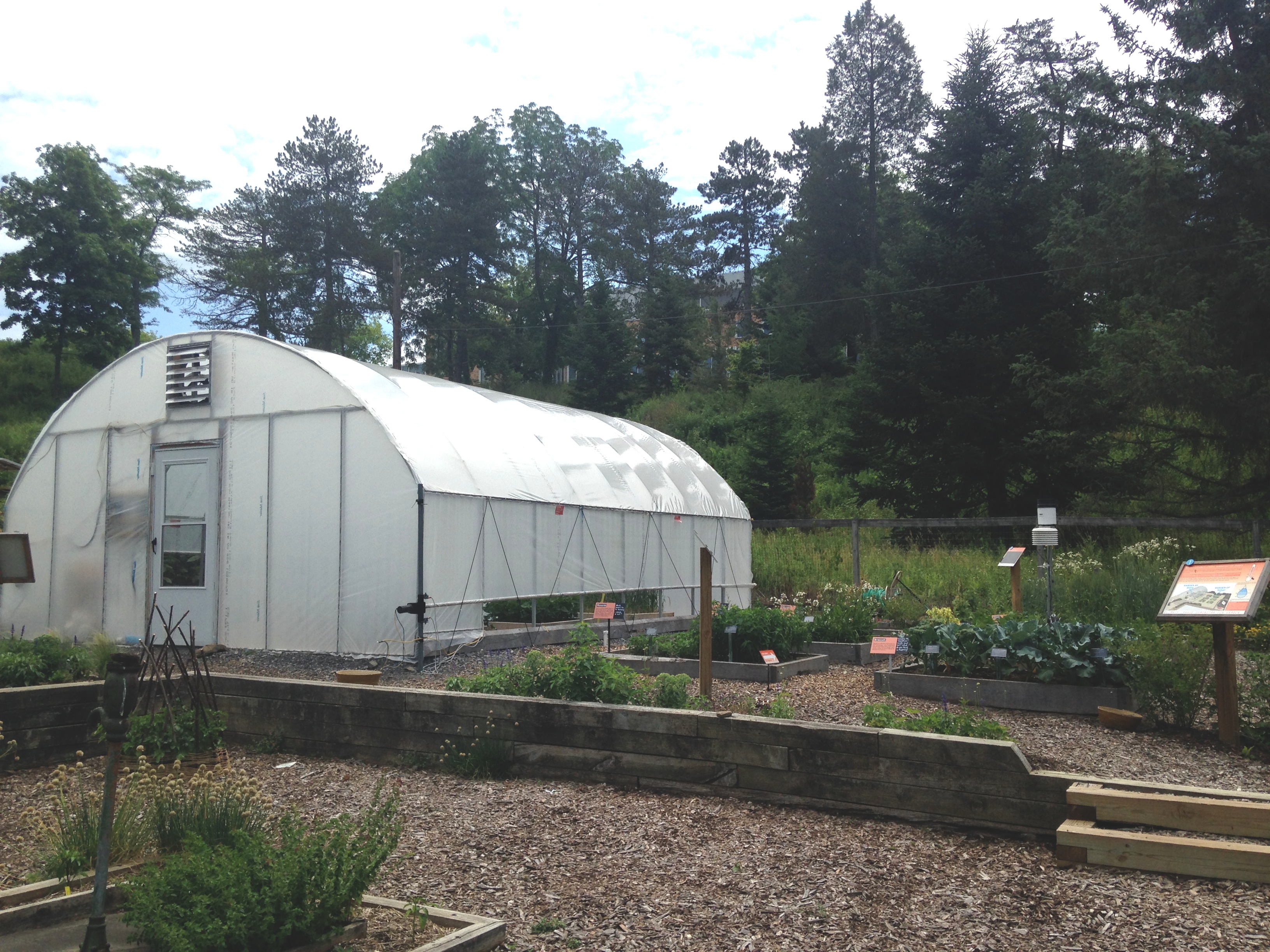History of the Climate Change Garden
Wednesday, July 13th, 2016
In 2012, Cornell Assistant Professor Josh Cerra, Emeritus Cornell Botanic Gardens Director Chris Wien, and Director of Education Sonja Skelly began investigating the potential for a “Climate Change Education Garden” for increasing climate change awareness. Wien helped build the high tunnel, along with Cerra and a group of designers, which continues to play a key role in controlling environmental conditions. In addition to Josh Cerra and Chris Wien, Cornell Botanic Gardens Director of Education Sonja Skelly formed the original team members in the Climate Change Garden. With a background in anthropology and horticulture, Skelly provides a bridge across numerous disciplines involved and an appropriate focus for the project.

Images: Climate Change Garden 2016
The first year the team received funding through the Toward Sustainability Foundation and the consecutive two years through the Atkinson Center for a Sustainable Future. This funding allowed for the developing of the project in the Pounder Vegetable Garden at Cornell Botanic Gardens and continues to allow for others to work on the project as well. In the midst of the third year of the Climate Change Garden Education Experiment, the numerous hands involved in this project continue to grow. Pete Marchetto, Cornell PhD student with a background in physics and engineering, joined the project this past year. While serving as Teacher’s Assistant in Cornell Associate Professor Todd Walter’s ecohydrology graduate seminar, Marchetto assigned students the task of regulating the temperature inside the tunnel to be 5.5-6.3 degrees above the ambient temperature at all times to simulate middle range models for predicted temperatures in the year 2050.
In addition to Marchetto, Cristhian Corona joined the Climate Change Garden through the Nexo Global program, which partners students at the National University of Colombia with researchers at both Cornell University and Purdue University. Throughout his time here, Corona has developed both a theoretical and physical model to replicate rainfall in Ithaca, NY. Utilizing the velocity of raindrops, raindrop size distribution, duration of the rainfall, frequency of rainfall over time, and intensity, Corona has developed a highly realistic watering system mimicking Ithaca’s natural rain. You can access information about the progress in Corona's research here. He has a background in Civil Engineering from the National University of Colombia, but working with Cerra allows an exchange of insight between each of their disciplines. We hope to incorporate Cristhian’s watering system in future years.
As the Climate Change Garden continues to grow, people of various disciplines continue to join the project, such as Cornell Botanic Gardens employees: Donna Levy; Environmental Education Outreach Coordinator and Sarah Fiorello; Interpretation Coordinator. For this year’s garden, there has also been an addition of Graham Smith, and myself: Cornell Botanic Gardens Intern. Though the goals of the experiment have evolved over the years, they can now be articulated as choosing the right amount and types of plants, knowing how to treat those plants in a way that portrays climate change most obvious to the viewer, precise environmental controls implemented using the high tunnel, and a statistically relevant outcome through the visitor surveys and interpretation. This project is unique and the first of it’s kind but progressively becomes more finely tuned each year. As the project becomes lower maintenance, it is the hope that it will be replicated in other areas outside of Central New York to show climate change effects at other universities, botanic gardens, and museums around the globe.
Written by Jessica Barbini (2016 Cornell Botanic Gardens Intern)
Image: Josh Cerra and Graham Smith in the high tunnel. Visitors to the garden..jpg)









